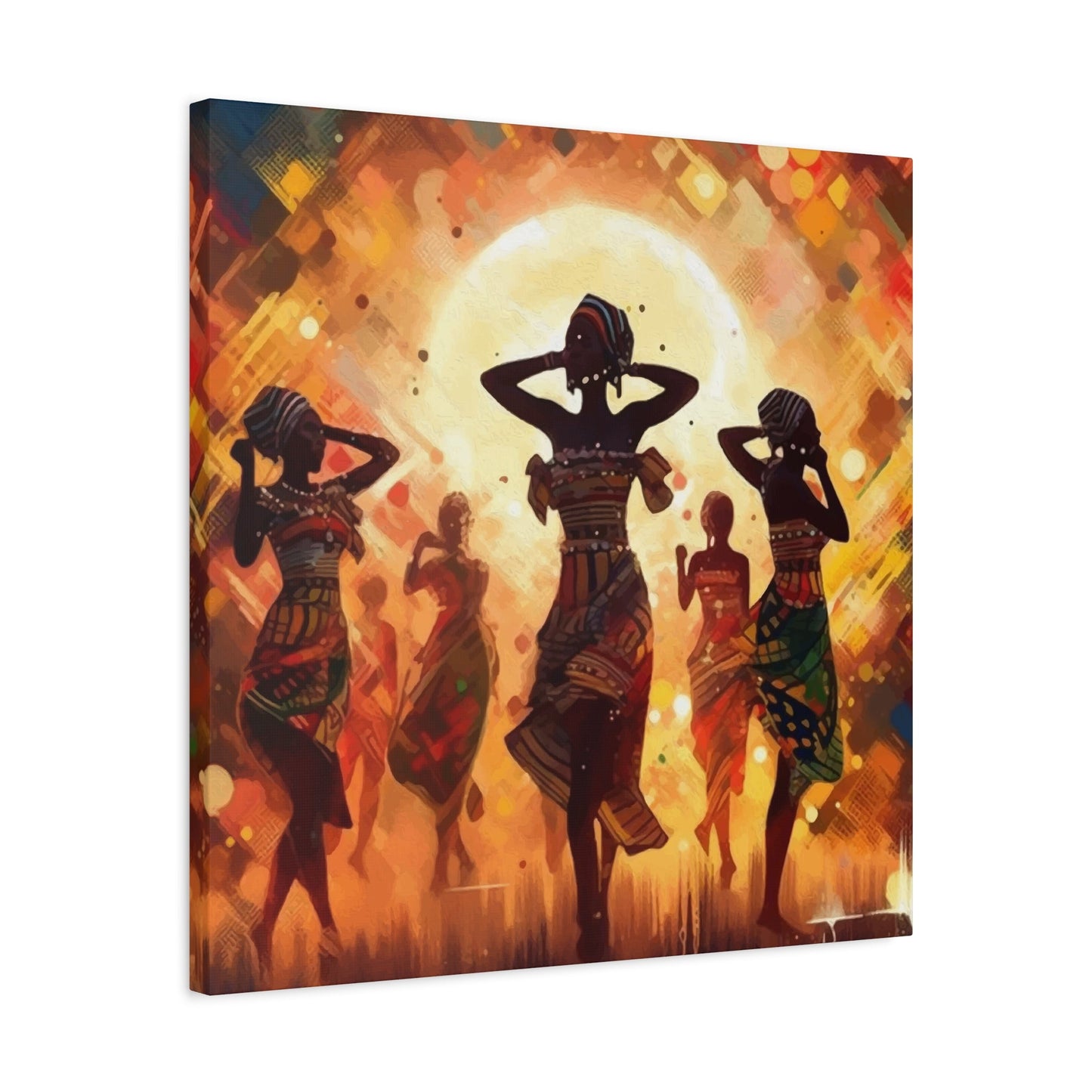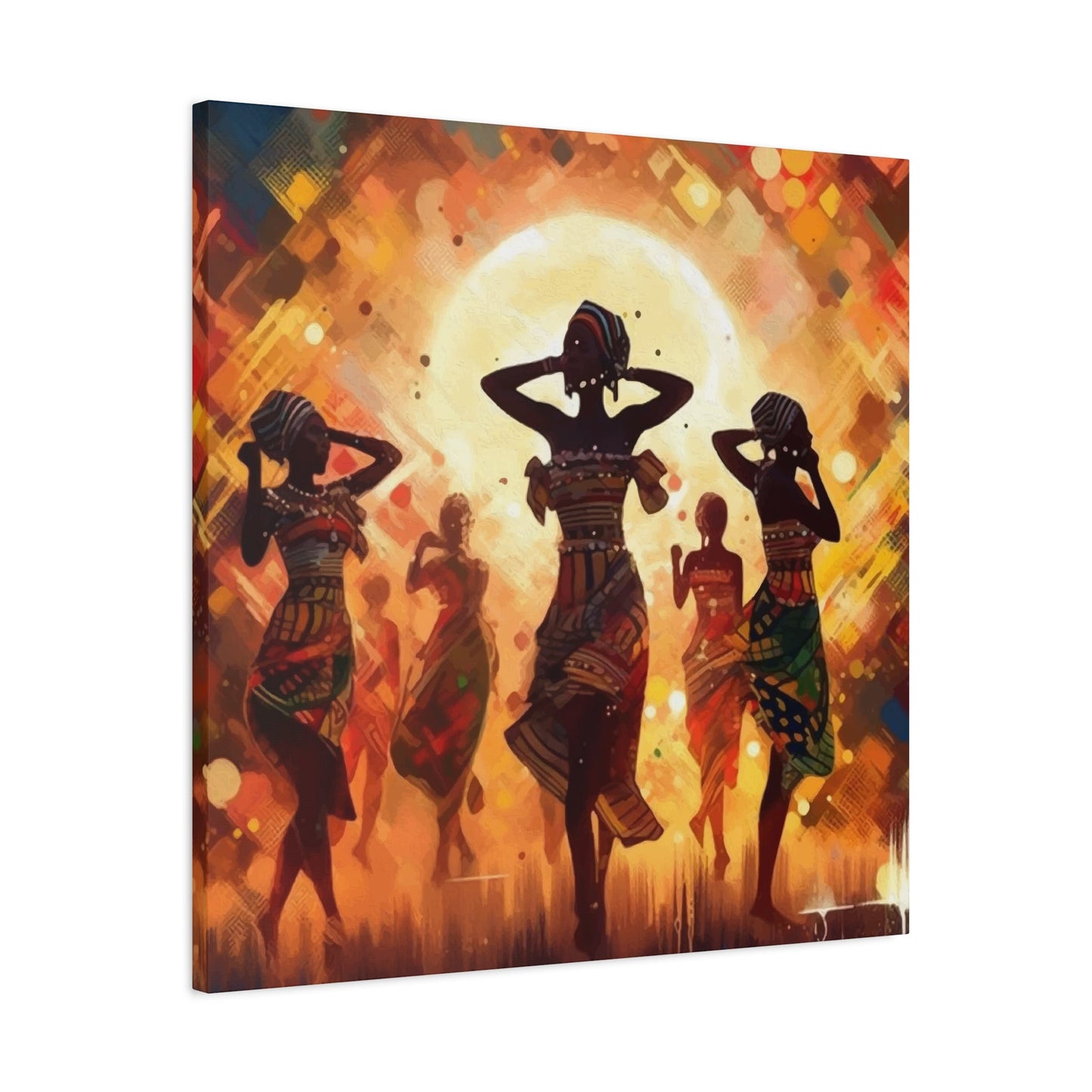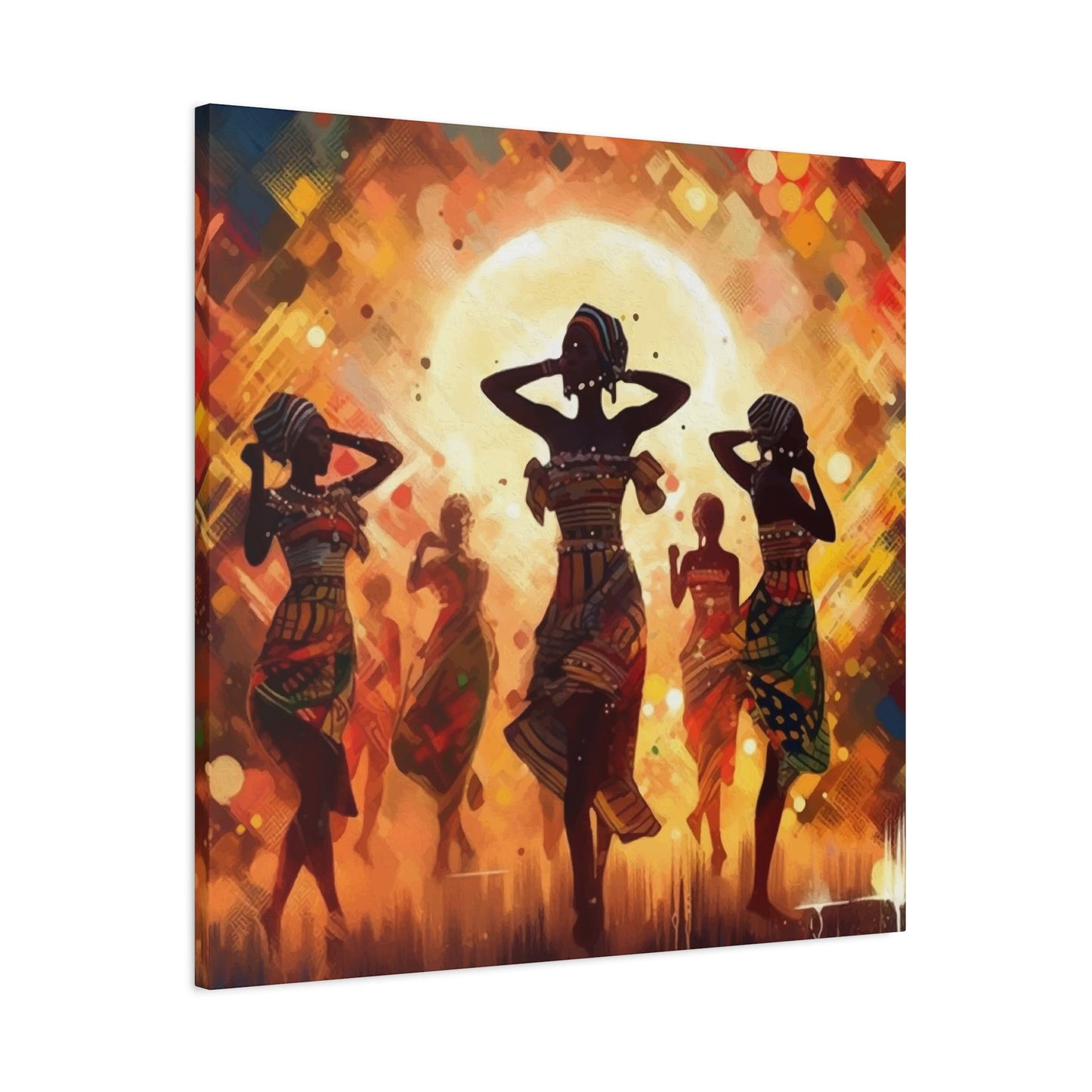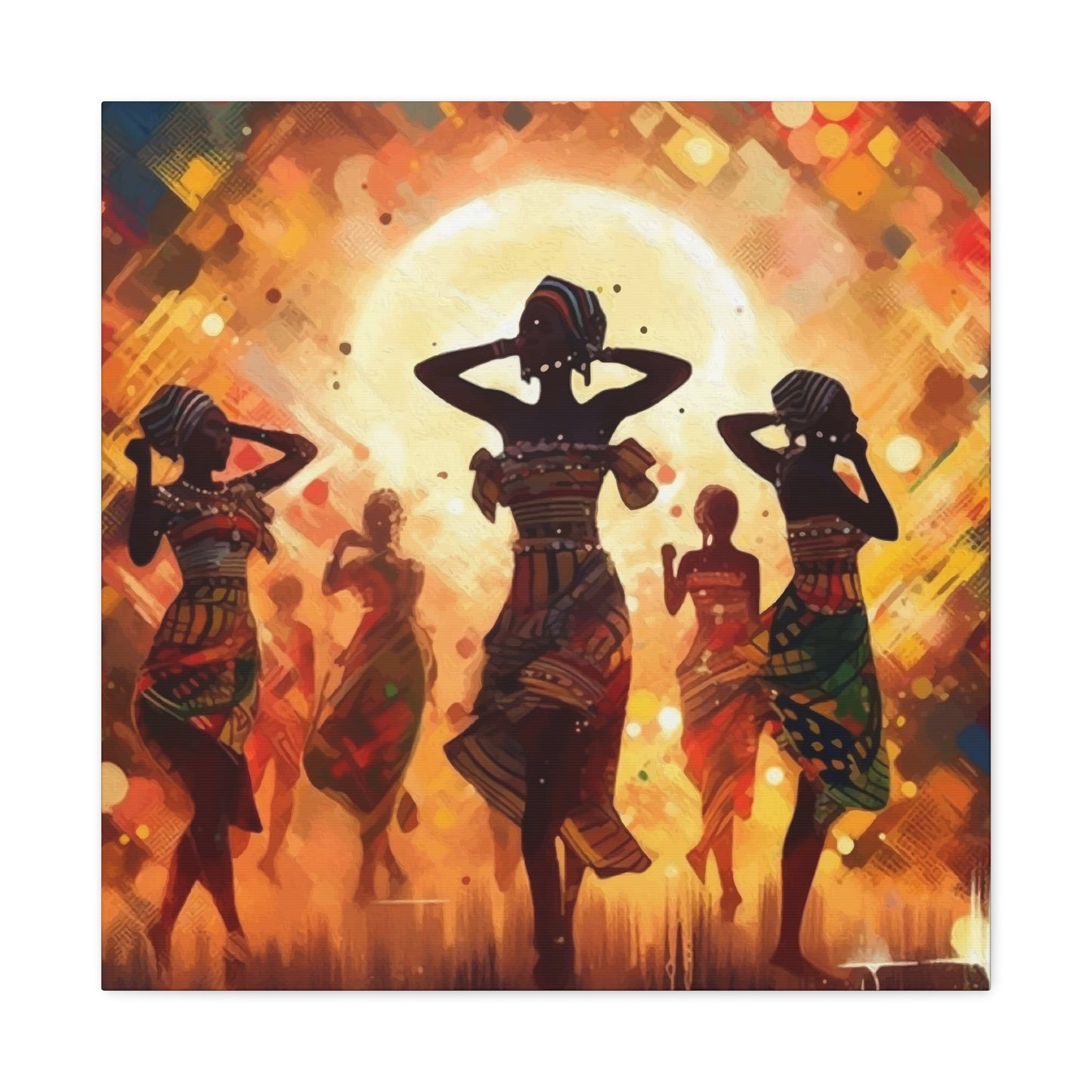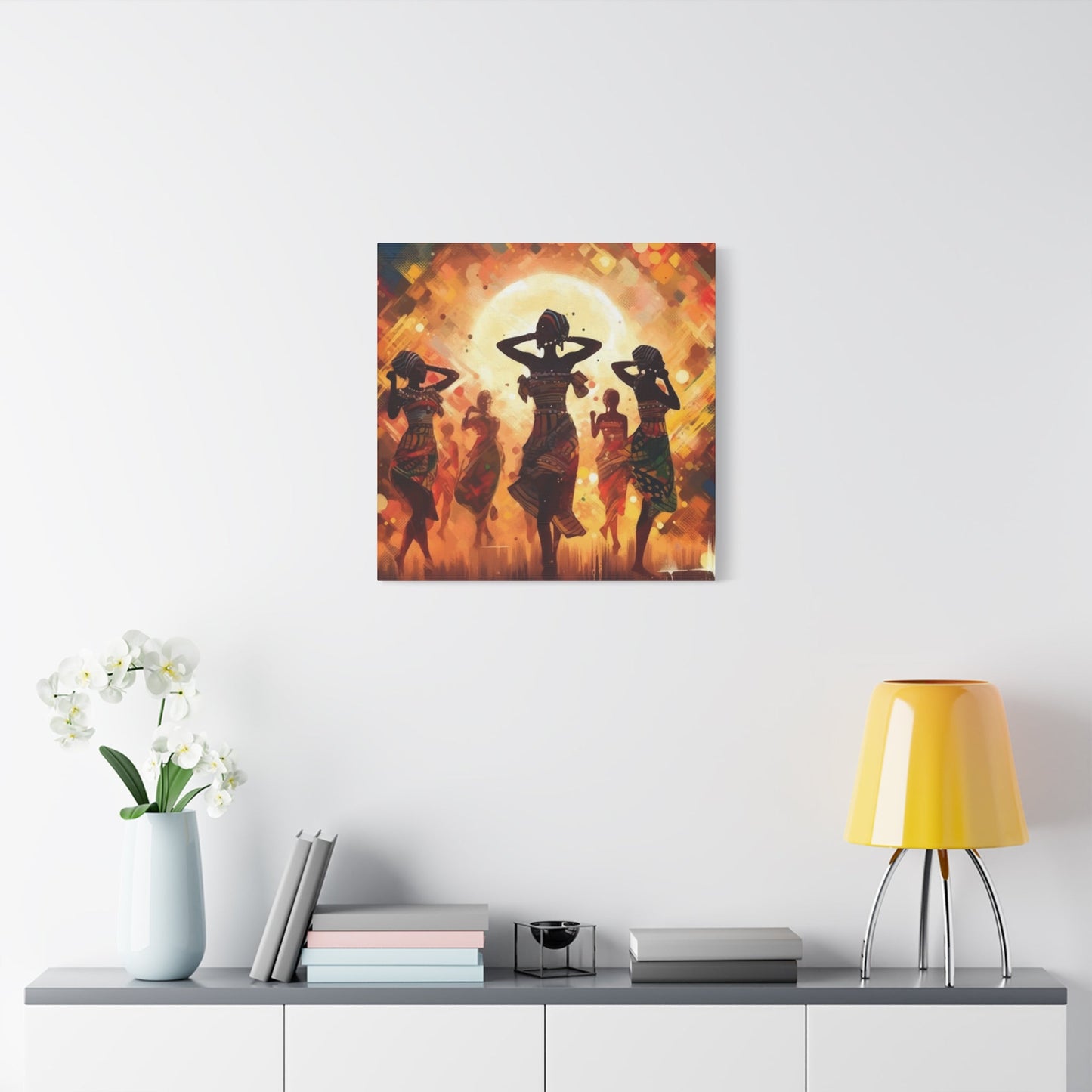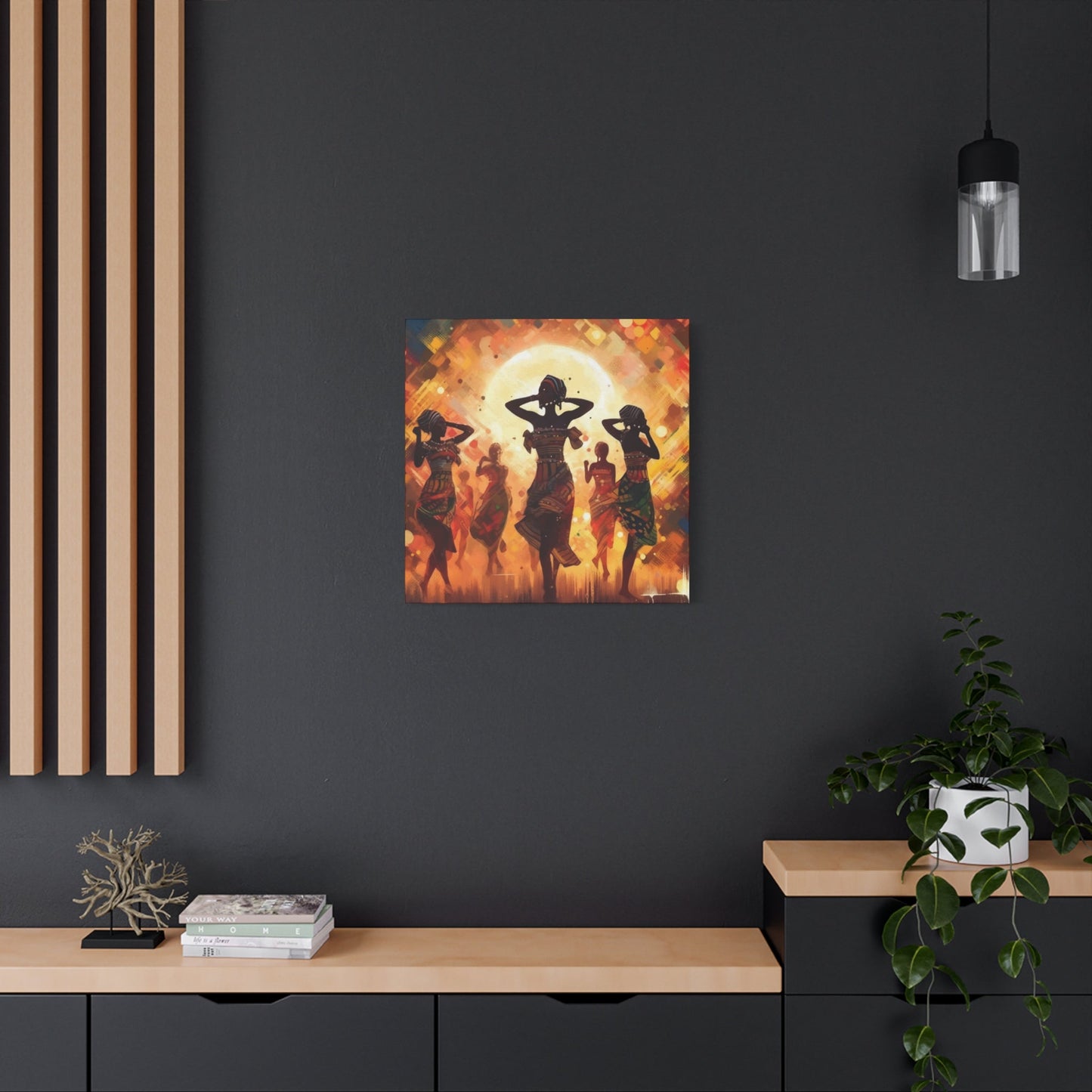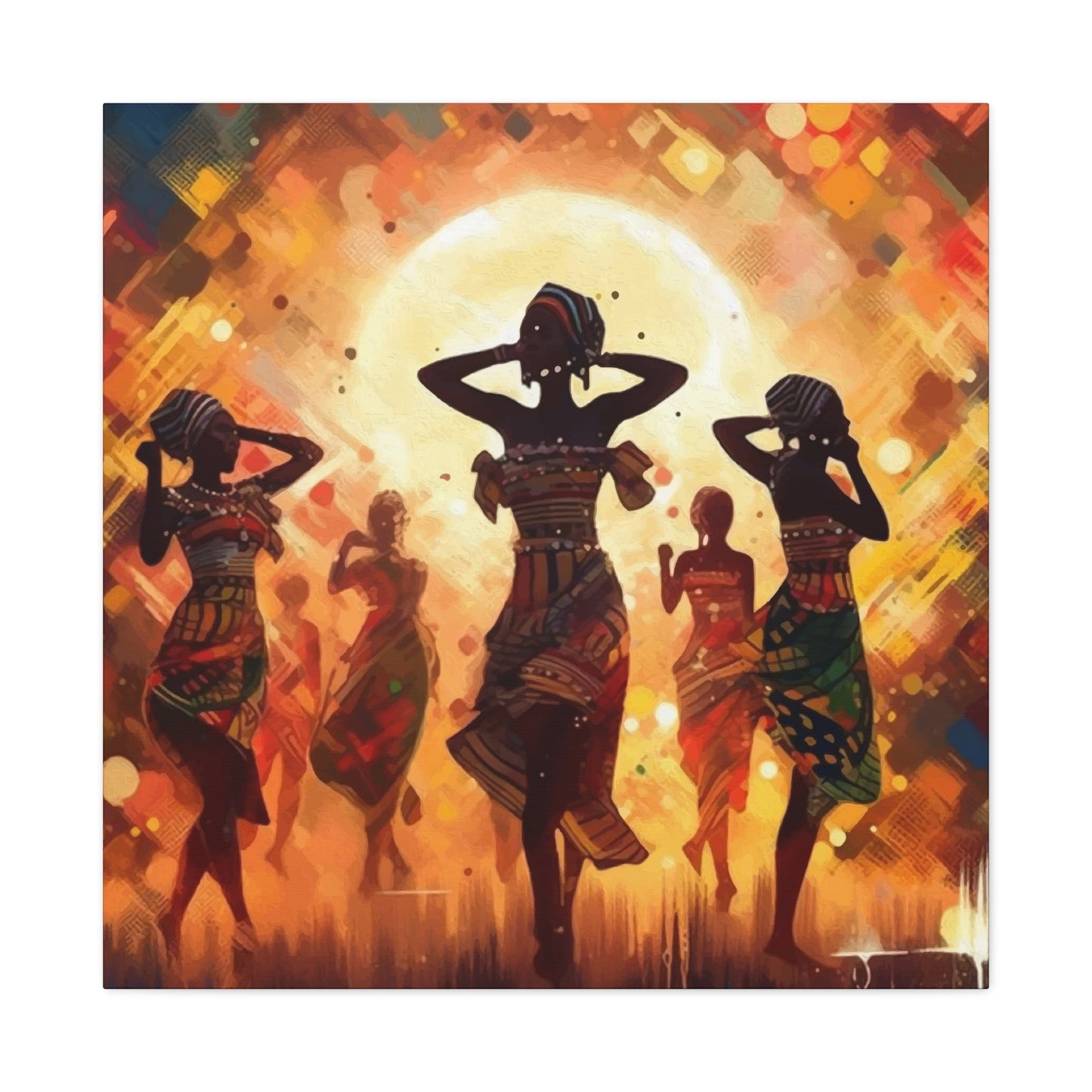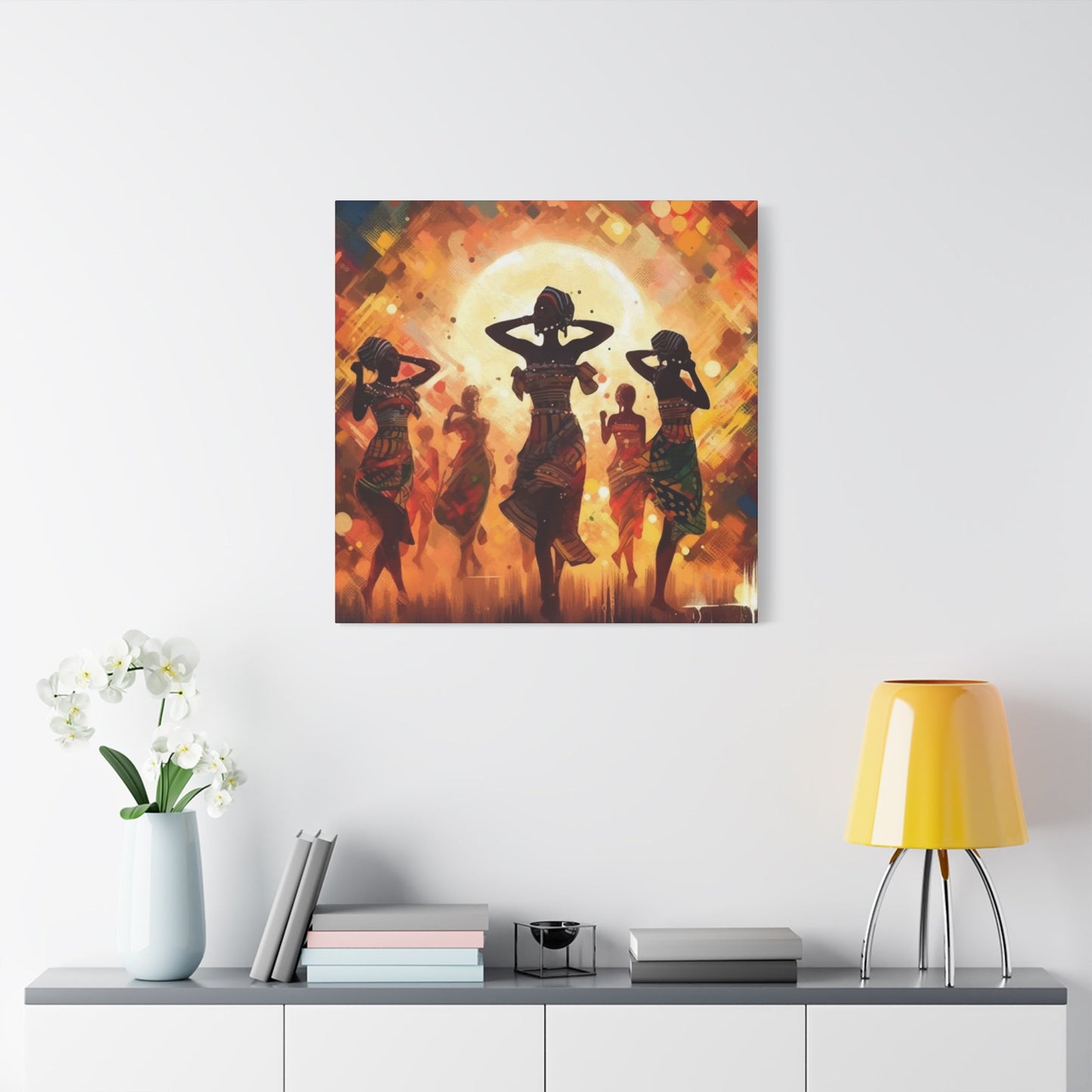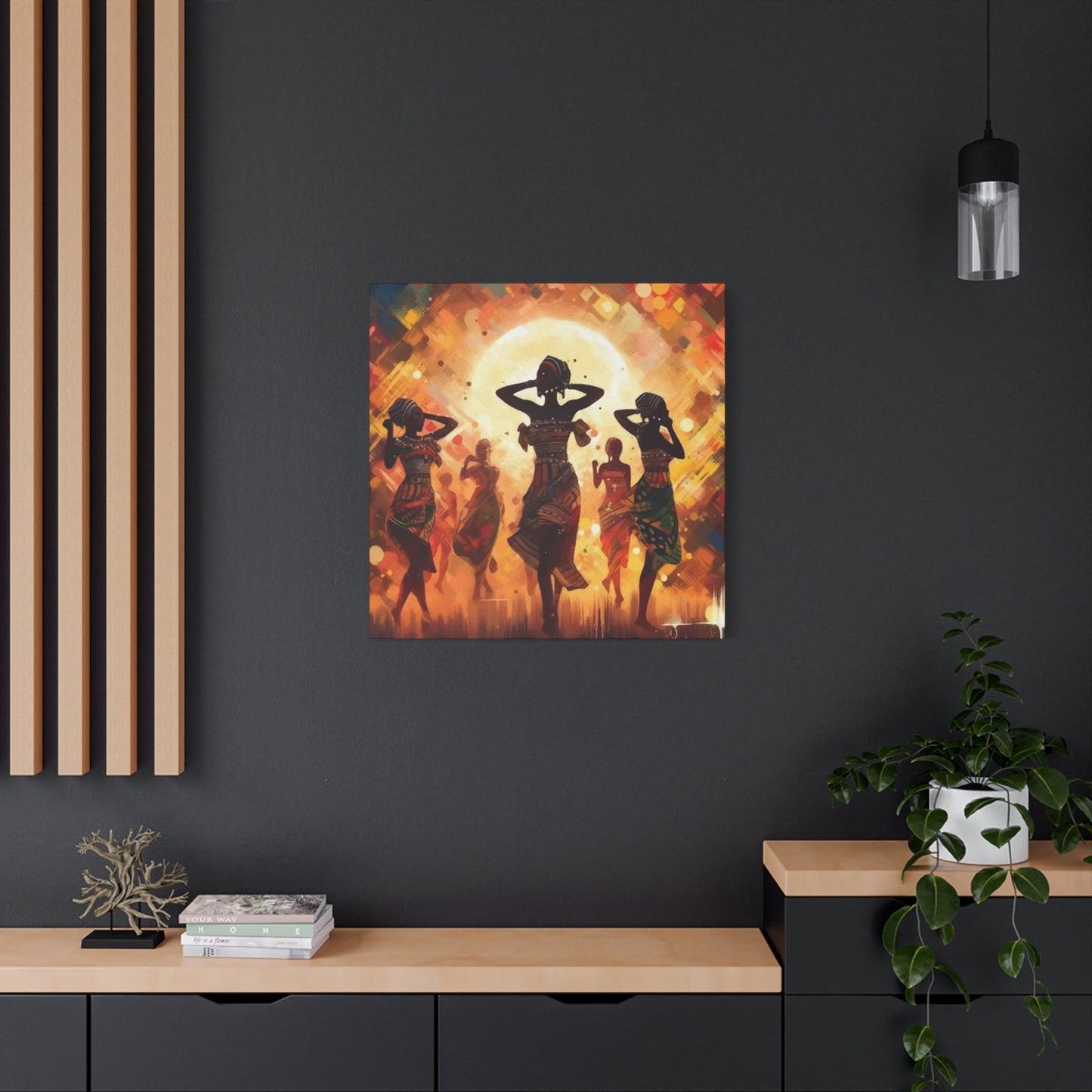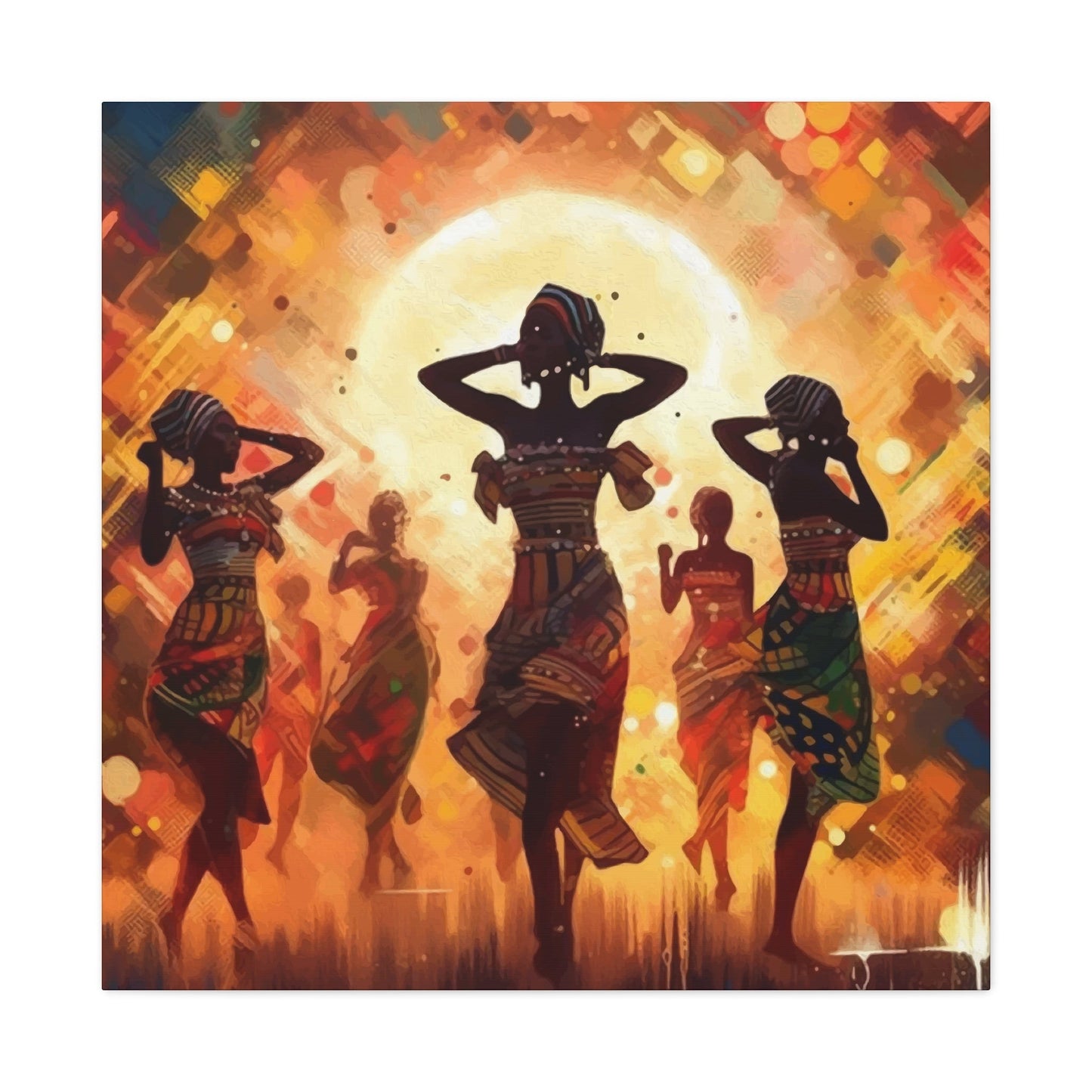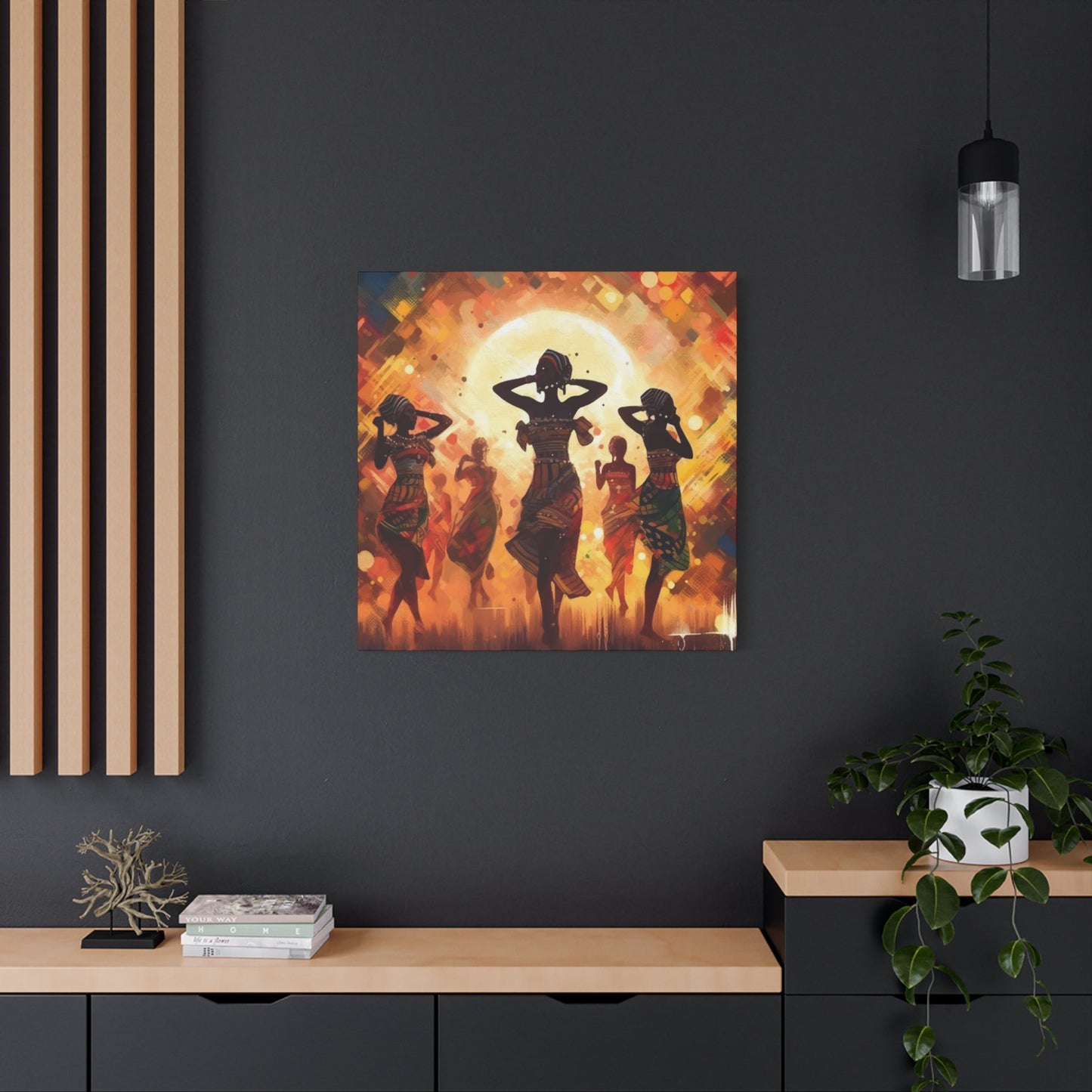African Dance Wall Art: Celebrating Movement, Culture, and Artistic Expression
African dance wall art represents one of the most dynamic and culturally rich forms of artistic expression available to contemporary art enthusiasts. This vibrant art form captures the essence of movement, rhythm, and cultural storytelling through visual representation, bringing the energy and spirit of traditional African dance into homes, offices, and public venues worldwide. The growing popularity of this art form reflects a deeper appreciation for African culture and its profound influence on global artistic traditions.
The significance of African dance extends far beyond mere entertainment or aesthetic appeal. It serves as a vital connection to ancestral wisdom, community bonds, and spiritual practices that have been passed down through generations. When translated into wall art, these movements become frozen moments of cultural expression that continue to tell stories and evoke emotions long after the original dance has ended. This artistic transformation allows viewers to experience the power and beauty of African dance in a permanent, accessible format.
Contemporary artists and traditional craftspeople alike have embraced the challenge of capturing the fluidity and energy of dance in static visual forms. Through various mediums including paintings, sculptures, prints, and mixed media works, they create pieces that seem to pulse with life and movement. The resulting artworks serve multiple purposes: they preserve cultural heritage, educate viewers about African traditions, and provide powerful decorative elements that can transform any living or working environment.
The market for African dance wall art has expanded significantly in recent years, driven by increased cultural awareness, global connectivity, and a growing appreciation for diverse artistic traditions. Collectors, decorators, and cultural institutions recognize the value of these pieces not only as beautiful objects but also as important cultural artifacts that deserve preservation and celebration. This growing demand has created opportunities for both established and emerging artists to share their interpretations of African dance through visual art.
Vibrant Colors and Movement in African Dance Wall Art
The use of vibrant colors in African dance wall art serves as more than mere aesthetic choice; it represents a fundamental aspect of how African cultures express emotion, spirituality, and community identity through visual means. Traditional African textiles, ceremonial garments, and body paintings have long incorporated bold, saturated colors that carry specific meanings and cultural significance. When artists translate these color traditions into dance-themed wall art, they create pieces that resonate with authentic cultural expression while appealing to contemporary sensibilities.
Red, yellow, orange, and earth tones frequently dominate these artistic compositions, reflecting the natural landscapes of the African continent and the warm energy of community celebrations. These colors are often combined with deep blues, vibrant greens, and rich purples to create compositions that seem to vibrate with life and movement. The strategic use of color helps artists suggest motion even in static mediums, with flowing color gradients and bold contrasts creating visual rhythms that echo the musical rhythms that accompany traditional dances.
Artists employ various techniques to suggest movement through color application. Brush strokes may follow the implied direction of a dancer's gesture, creating flowing lines of color that guide the viewer's eye across the composition. Color bleeding and blending techniques can suggest the blur of motion, while sharp color contrasts can emphasize the dramatic moments of a dance sequence. These approaches help bridge the gap between the temporal nature of dance and the static nature of visual art.
The psychological impact of these vibrant color schemes cannot be understated. Warm colors tend to evoke feelings of energy, passion, and joy, while the dynamic interplay of multiple hues creates visual excitement that mirrors the emotional intensity of live dance performances. Viewers often report feeling uplifted and energized when surrounded by African dance wall art, suggesting that the color choices successfully transmit some of the emotional power of the original dance forms.
Contemporary interpretations of African dance wall art may incorporate modern color theories and techniques while maintaining respect for traditional color symbolism. Some artists experiment with fluorescent colors, metallic accents, or unusual color combinations to create pieces that speak to both traditional and modern audiences. However, the most successful pieces typically maintain a connection to authentic African color traditions while finding fresh ways to express timeless themes of celebration, community, and spiritual connection.
The technical execution of color in these artworks requires considerable skill and cultural understanding. Artists must balance historical accuracy with artistic innovation, ensuring that their color choices enhance rather than overshadow the cultural significance of the depicted dance forms. This requires research into the specific traditions being represented, as different regions and cultures within Africa have distinct color associations and symbolic meanings that should be respected in artistic interpretations.
How African Dance Wall Art Inspires Joy and Freedom
African dance wall art possesses a unique ability to evoke powerful emotional responses in viewers, particularly feelings of joy, liberation, and spiritual transcendence. This emotional impact stems from the fundamental nature of African dance itself, which has traditionally served as a means of expressing the full range of human experience through physical movement. When these expressions are captured in visual art form, they retain much of their emotional potency and continue to inspire similar feelings in those who encounter them.
The concept of joy in African dance traditions extends beyond simple happiness or entertainment. It encompasses a deeper sense of community celebration, spiritual connection, and cultural pride that has sustained African communities through centuries of challenge and change. Dance serves as a vehicle for expressing gratitude, marking important life events, and maintaining connections to ancestral wisdom. When wall art captures these moments of celebration, it brings that same sense of joy and cultural continuity into contemporary living environments.
Freedom of expression represents another crucial element that African dance wall art communicates to viewers. Traditional African dances often emphasize individual creativity within community structures, allowing dancers to express their unique personalities while participating in collective cultural practices. This balance between personal expression and community belonging resonates strongly with modern audiences who may struggle to find similar balance in their own lives. Viewing art that captures these moments of expressive freedom can serve as inspiration for viewers to embrace their own creative potential.
The physical dynamism portrayed in these artworks also contributes to their inspirational quality. Human beings are naturally drawn to representations of graceful, powerful movement, and African dance traditions offer some of the most compelling examples of such movement in world culture. The flowing lines, dramatic gestures, and athletic prowess depicted in these artworks can motivate viewers to embrace more active, expressive lifestyles and to appreciate the beauty of the human form in motion.
Psychological research suggests that exposure to positive, energetic imagery can have measurable effects on mood and motivation. African dance wall art, with its emphasis on celebration, community, and physical expression, provides exactly this type of positive visual stimulation. Many collectors report that these pieces serve as daily reminders to approach life with greater enthusiasm and to maintain connections to community and cultural heritage.
The inspirational power of these artworks extends beyond individual viewers to influence entire living or working environments. Offices that display African dance wall art often report improved employee morale and creativity. Educational institutions find that these pieces help create more engaging, culturally aware learning environments. Community centers and cultural organizations use such art to reinforce their missions of celebration and cultural preservation.
The freedom aspect of these artworks also speaks to broader themes of human liberation and social justice. The history of African peoples includes struggles for freedom and self-determination that continue to resonate in contemporary social movements. Wall art that celebrates African cultural traditions implicitly honors these struggles while affirming the enduring strength and beauty of African cultural expression. This connection to larger social themes adds depth and meaning to the joy these artworks inspire.
Popular Artistic Styles Depicting African Dance
The artistic representation of African dance encompasses a remarkably diverse range of styles, techniques, and cultural interpretations that reflect both traditional African artistic traditions and contemporary global art movements. Understanding these various styles helps collectors and enthusiasts make informed choices while appreciating the rich artistic heritage that informs each approach to depicting dance through visual art.
Traditional African artistic styles often emphasize symbolic representation over realistic portrayal, using stylized figures and geometric patterns to convey the essence of movement and cultural meaning. These approaches prioritize spiritual and cultural significance over anatomical accuracy, creating powerful visual statements that communicate deep cultural truths through artistic metaphor. Mask-making traditions, textile designs, and ceremonial art provide rich sources of inspiration for contemporary artists working in this traditional style framework.
Realistic and semi-realistic styles attempt to capture the actual physical appearance of dancers in motion, often emphasizing the athletic beauty and grace of the human form. These approaches require considerable technical skill in figure drawing and an understanding of human anatomy in motion. Artists working in these styles often study photography and video footage of traditional dances to ensure accuracy in their representations of specific dance forms and regional variations.
Abstract expressionist interpretations focus on capturing the emotional and spiritual essence of dance through non-representational forms, colors, and compositional elements. These pieces may use flowing lines, dynamic color relationships, and rhythmic patterns to suggest the feeling of dance without literally depicting human figures. This approach allows artists to explore the universal aspects of rhythm, movement, and cultural expression that transcend specific dance traditions.
Mixed media approaches combine various artistic materials and techniques to create multi-dimensional representations of dance. These pieces might incorporate fabric, beadwork, carved elements, or found objects alongside traditional painting or drawing techniques. The tactile quality of these works helps communicate the sensory richness of actual dance performances, where sight, sound, touch, and movement combine to create immersive cultural experiences.
Contemporary fusion styles blend African dance imagery with modern artistic movements such as pop art, street art, or digital art techniques. These approaches often appeal to younger audiences while maintaining respect for traditional cultural forms. Successful fusion pieces find ways to honor the cultural significance of African dance while speaking to contemporary aesthetic sensibilities and social concerns.
Photorealistic styles use advanced painting or printing techniques to create artwork that closely resembles photography. These pieces often focus on capturing specific moments of dramatic movement or emotional expression, freezing dance sequences at their most visually compelling points. The technical precision required for this style demands considerable artistic skill and often involves extensive reference material and planning.
Regional variations within African dance artistic representation reflect the incredible diversity of dance traditions across the African continent. West African, East African, Southern African, and Central African dance traditions each have distinct characteristics that knowledgeable artists incorporate into their work. These regional differences might appear in costume details, body positioning, musical instrument inclusion, or cultural symbol integration.
The choice of artistic style often depends on the intended purpose and audience for the artwork. Traditional styles may be preferred for cultural education or heritage preservation projects, while contemporary styles might be chosen for modern home decoration or commercial applications. The most successful pieces often find ways to bridge these different needs, creating art that satisfies both cultural authenticity and contemporary aesthetic requirements.
Incorporating African Dance Wall Art into Your Home Decor
Successfully integrating African dance wall art into residential environments requires thoughtful consideration of both aesthetic and cultural factors. These powerful artworks can serve as focal points that transform entire rooms while honoring the cultural significance of their subject matter. The key lies in creating harmonious relationships between the art, the architectural environment, and the existing decorative elements while maintaining respect for the cultural traditions represented.
Living room integration offers perhaps the greatest opportunities for displaying African dance wall art effectively. These communal areas naturally suit the community-oriented nature of African dance traditions. Large-scale pieces can serve as dramatic focal points above sofas or fireplaces, while smaller works can be grouped to create gallery-style arrangements. The key is ensuring that the scale and intensity of the artwork complement rather than overwhelm the living environment.
Color coordination requires careful attention when incorporating these typically vibrant artworks into existing color schemes. Rather than matching colors exactly, successful integration often involves creating complementary relationships where the artwork's colors enhance and are enhanced by surrounding elements. Neutral backgrounds in warm tones often provide excellent foundations for vibrant dance art, while carefully chosen accent pieces can echo specific colors from the artwork throughout the room.
Bedroom applications of African dance wall art can create inspiring, culturally rich environments that promote rest while celebrating cultural heritage. However, the intense energy of some dance artworks might be overwhelming in sleep environments. Pieces that emphasize flowing movement and earth tones often work better than highly dynamic or brightly colored works. Placement opposite the bed allows for appreciation without dominating the rest environment.
Dining room installations can be particularly effective, as meals traditionally serve as community gathering times in many African cultures. The communal nature of both dining and dance creates natural thematic connections. Pieces that celebrate community, harvest, or ceremonial themes work especially well in these environments. Consider lighting carefully, as dining rooms often have variable lighting conditions that can significantly affect how artwork appears.
Hallway and entrance applications allow African dance wall art to serve as cultural welcome statements that set the tone for entire homes. These transitional locations can accommodate more dramatic or challenging pieces that might be overwhelming in intimate living areas. The movement suggested by dance art works particularly well in these circulation areas where people are naturally in motion.
Home office integration requires balancing the inspirational qualities of African dance art with the focused environment needed for productive work. Pieces that emphasize themes of community, creativity, and cultural pride can provide daily motivation without creating distracting visual noise. Consider the sight lines from primary work positions when selecting and placing pieces.
Scale considerations are crucial for successful integration. Large homes with high ceilings can accommodate dramatic, oversized pieces that might overwhelm smaller environments. Conversely, modest living areas might benefit from series of smaller pieces or single medium-sized works that provide cultural richness without dominating limited visual real estate.
Lighting design significantly affects how African dance wall art appears and functions within residential environments. Many of these pieces benefit from warm, adjustable lighting that can emphasize their vibrant colors and dynamic compositions. Track lighting, picture lights, or strategically placed lamps can dramatically enhance the impact of these artworks while providing flexibility for different moods and occasions.
Cultural sensitivity remains paramount when incorporating these artworks into personal living environments. Understanding the cultural significance of depicted dance forms and treating the artwork with appropriate respect ensures that the integration honors rather than appropriates African cultural traditions. This might involve learning about the specific dances represented or the cultural contexts from which they emerge.
The Symbolism Behind Dance Poses in African Art
African dance poses captured in wall art carry profound symbolic meanings that extend far beyond mere aesthetic representation. Each gesture, position, and movement holds cultural significance that has been refined and preserved through generations of traditional practice. Understanding these symbolic meanings enhances appreciation for the artworks while providing insight into the rich cultural traditions they represent.
Upward-reaching gestures frequently appear in African dance art, symbolizing connection to spiritual realms, ancestral communication, and divine inspiration. These poses often represent prayers, celebrations of harvest success, or expressions of gratitude to higher powers. Artists may emphasize these upward movements through compositional techniques that draw the viewer's eye skyward, reinforcing the spiritual aspirations embodied in the original dance movements.
Grounded stances and low positions typically symbolize connection to earth, community, and ancestral wisdom. Many African dance traditions emphasize the importance of maintaining strong connections to the land and to the wisdom of previous generations. Artistic representations of these earthbound poses often use visual techniques such as strong horizontal lines or earth-toned colors to reinforce these symbolic connections.
Circular movements and poses suggest the cyclical nature of life, seasonal changes, and the continuity of cultural traditions. The circle holds special significance in many African cultures as a symbol of unity, completion, and eternal cycles. Wall art that captures dancers in circular formations or poses that suggest circular movement often communicates themes of community harmony and cultural continuity.
Hand and arm positions carry specific meanings that vary among different African dance traditions. Open arms may symbolize welcome, generosity, or spiritual openness, while specific finger positions might reference particular cultural practices or spiritual concepts. Artists must research these meanings carefully to ensure that their representations accurately convey the intended cultural messages.
Jumping and leaping poses often symbolize joy, celebration, and spiritual transcendence. These dynamic movements represent moments of peak emotional or spiritual intensity in traditional dances. Artistic captures of these moments typically employ dynamic compositional techniques to convey the energy and emotional power of the original movements.
Partner and group formations depicted in wall art reflect the community-oriented nature of African dance traditions. These poses emphasize themes of cooperation, mutual support, and collective celebration. Artists often use compositional techniques such as interconnected lines or harmonious color relationships to reinforce the unity and connection represented by group dance formations.
Warrior poses and movements that suggest strength or protection carry important cultural meanings related to community defense, personal courage, and cultural preservation. These poses often appear in dances that commemorate historical events or celebrate the strength of cultural identity. Artistic representations might emphasize these themes through strong, angular compositions or bold color choices.
Harvest and fertility-related poses appear frequently in African dance art, reflecting the agricultural basis of many traditional African societies. These movements often celebrate successful harvests, pray for future abundance, or honor the fertility of both land and people. Artists might incorporate natural symbols or earth-toned color palettes to reinforce these agricultural connections.
Ritualistic poses carry deep spiritual significance related to specific ceremonial practices. These might include initiation rites, healing ceremonies, or ancestral honoring rituals. Artists working with these themes must approach them with particular sensitivity and cultural understanding to avoid misrepresentation of sacred practices.
The temporal aspect of dance poses presents unique challenges for visual artists. Unlike the fluid, continuous nature of actual dance, wall art captures single moments frozen in time. Successful artists find ways to suggest the before and after of captured poses, using compositional techniques that imply the continuous flow of movement from which the depicted moment emerges.
Gender-specific poses and their symbolic meanings reflect the diverse roles of men and women in traditional African societies. Understanding these distinctions helps ensure that artistic representations accurately convey the cultural contexts they reference. Some poses may be specific to male or female dancers, while others might be performed by all community members regardless of gender.
Contemporary interpretations of traditional symbolic poses must balance historical accuracy with modern artistic expression. Artists may choose to emphasize certain symbolic elements while adapting others to speak to contemporary audiences. The most successful approaches maintain the essential cultural meanings while finding fresh ways to communicate these timeless themes.
Using African Dance Wall Art to Celebrate Heritage
African dance wall art serves as a powerful tool for heritage celebration, providing tangible connections to cultural roots while creating opportunities for intergenerational learning and community building. For individuals and families of African descent, these artworks can strengthen cultural identity and provide daily reminders of rich ancestral traditions. For others, they offer opportunities to appreciate and honor the contributions of African cultures to global artistic heritage.
Personal heritage celebration through wall art allows individuals to maintain visible connections to their cultural backgrounds regardless of geographic location or generational distance from ancestral homelands. These visual reminders can help preserve family stories, traditional values, and cultural practices that might otherwise be lost over time. The presence of culturally significant artwork in homes creates natural opportunities for sharing these traditions with family members, particularly children who may be growing up far removed from traditional cultural contexts.
Educational applications of heritage-celebrating wall art extend beyond personal use to encompass classroom, library, and community center installations. These public displays can help educate broader audiences about African cultural traditions while providing positive representation for African and African-descended community members. Educational installations often benefit from accompanying information that explains the cultural contexts and meanings of depicted dances.
Community center applications create gathering places where cultural heritage can be actively celebrated and preserved. African dance wall art in these environments often serves as inspiration for actual dance classes, cultural events, and community celebrations. The visual presence of these artworks helps reinforce the cultural mission of these organizations while creating welcoming environments for community members seeking cultural connection.
Festival and celebration enhancement represents another important application for heritage-celebrating wall art. Temporary installations during cultural festivals can help create immersive environments that transport participants to different cultural contexts. These applications often involve large-scale, dramatic pieces that can compete with the energy and excitement of live festivities while providing educational context for celebration activities.
Intergenerational connection facilitation occurs naturally when families display African dance wall art in their homes. Older family members often use these visual prompts to share stories, explain cultural practices, and maintain connections to traditions they experienced firsthand. Younger family members gain visual references that help them understand and appreciate their cultural heritage in tangible ways.
Cultural preservation efforts benefit significantly from the documentation and artistic interpretation provided by dance-themed wall art. As traditional dance practices face pressure from modernization and globalization, artistic representations help preserve visual records of these important cultural expressions. These artistic documents can serve future generations as references for cultural practices that might otherwise be lost.
Identity affirmation provides crucial psychological benefits for individuals who use African dance wall art to celebrate their heritage. In societies where African cultural contributions may be undervalued or misunderstood, these positive visual representations help affirm the beauty and significance of African traditions. This affirmation can contribute to improved self-esteem and cultural pride.
Therapeutic applications of heritage-celebrating wall art have been documented in various community programs and individual healing processes. Art therapy programs often use culturally relevant imagery to help individuals explore their identity and process cultural trauma. The positive, celebratory nature of dance art can provide healing alternatives to more traumatic historical imagery.
Wedding and life celebration applications allow families to incorporate cultural heritage into important personal milestones. African dance wall art can provide meaningful backdrops for wedding ceremonies, anniversary celebrations, or coming-of-age rituals. These applications help ensure that cultural traditions remain integral to family celebrations rather than being relegated to museum or academic contexts.
Business and professional environment applications allow individuals to maintain cultural connections in workplace settings. Tastefully chosen African dance wall art in offices or business venues can serve as conversation starters about cultural heritage while creating more inclusive, culturally diverse work environments. These applications require careful selection to ensure professional appropriateness while maintaining cultural significance.
Contemporary adaptation challenges arise when using traditional African dance imagery in modern heritage celebration contexts. Artists and collectors must balance respect for historical traditions with the need to speak to contemporary audiences and address current cultural issues. Successful approaches often find ways to honor traditional forms while addressing themes relevant to contemporary African and African-descended communities.
Where to Find Authentic African Dance Wall Art
Locating authentic African dance wall art requires knowledge of reputable sources, understanding of authenticity markers, and awareness of ethical considerations surrounding cultural art acquisition. The growing popularity of these artworks has unfortunately led to increased production of imitation pieces that may lack cultural authenticity or exploit traditional artistic traditions without proper compensation to originating communities.
Gallery and museum sources often provide the highest level of authenticity assurance, as these institutions typically maintain rigorous standards for verifying the provenance and cultural accuracy of their collections. Museum gift shops frequently offer prints and reproductions of pieces from their permanent collections, providing accessible options for those who cannot afford original artworks. Gallery relationships with artists also ensure that purchases support working artists rather than mass production operations.
Artist studio visits and direct purchases offer opportunities to acquire original works while supporting individual artists and learning about their creative processes. Many contemporary African artists maintain studios where they create dance-themed works alongside other cultural subjects. These direct relationships often provide the most rewarding acquisition experiences while ensuring that purchases directly benefit the creative individuals responsible for the artworks.
Cultural festivals and art fairs frequently feature vendors specializing in African art, including dance-themed pieces. These events provide opportunities to see multiple artists' work in single locations while often featuring demonstrations, educational presentations, and cultural performances that enhance understanding of the art's cultural contexts. However, buyers should research vendors carefully to ensure authenticity and ethical sourcing.
Online marketplaces have dramatically expanded access to African dance wall art, but they require careful navigation to avoid inauthentic or culturally inappropriate pieces. Reputable online galleries often provide detailed provenance information, artist biographies, and cultural context explanations that help buyers make informed decisions. However, the lack of physical examination opportunities means buyers must rely heavily on seller reputation and return policies.
Community organizations and cultural centers often maintain connections with authentic sources for African art, including dance-themed pieces. These organizations may host art sales, maintain resource lists, or provide referrals to trusted dealers and artists. Their cultural expertise can help buyers avoid inappropriate or inauthentic pieces while supporting artists and organizations committed to cultural preservation.
Auction houses occasionally offer African dance art, particularly pieces by established artists or historical pieces with documented provenance. These venues can provide access to museum-quality pieces but require significant expertise to navigate successfully. Buyers should research pieces thoroughly and consider authentication costs when evaluating auction opportunities.
Authenticity verification requires understanding various markers that distinguish genuine cultural artwork from mass-produced imitations. These markers might include specific artistic techniques, cultural accuracy in depicting dance forms, quality of materials used, and evidence of the artist's cultural knowledge and connection to the traditions represented. Consulting with cultural experts or established collectors can help develop this expertise.
Ethical sourcing considerations are particularly important when acquiring African art, given historical exploitation of African artistic traditions and ongoing concerns about cultural appropriation. Buyers should prioritize purchases that directly benefit African artists and communities while avoiding pieces that may have been produced without appropriate cultural permissions or compensation.
Price considerations for authentic pieces vary widely depending on artist reputation, piece size, medium, and cultural significance. Original paintings and sculptures typically command higher prices than prints or reproductions, while works by established artists cost more than those by emerging talents. Buyers should research comparative prices and consider long-term value when making acquisition decisions.
Regional specialization among dealers and galleries can provide access to specific traditions or artistic styles. Some sources specialize in particular regions of Africa or specific dance traditions, offering deeper expertise and more focused selections than general African art dealers. These specialized sources often provide more detailed cultural context and authentication services.
Emerging artist support through thoughtful purchasing decisions can help sustain contemporary African artistic traditions while providing access to innovative interpretations of traditional themes. Many young African artists are creating compelling dance-themed works that blend traditional cultural knowledge with contemporary artistic techniques and global perspectives.
Conservation and preservation considerations become important for collectors of original artworks. Understanding proper display, storage, and maintenance requirements helps ensure that acquired pieces maintain their condition and value over time. This is particularly important for pieces using traditional materials or techniques that may require special care.
The Role of Rhythm and Motion in African Dance Art
Rhythm and motion serve as fundamental organizing principles in African dance wall art, challenging artists to translate the temporal elements of music and movement into static visual forms. The success of these artworks often depends on how effectively they convey the underlying rhythmic structures and kinetic energy that define African dance traditions. This translation process requires deep understanding of both the original dance forms and the visual techniques that can suggest movement and rhythm in static mediums.
Visual rhythm creation in African dance art employs various compositional techniques to suggest the underlying musical rhythms that accompany traditional dances. Artists might use repeating visual elements, color patterns, or gestural marks that echo the percussion patterns fundamental to African musical traditions. These visual rhythms help viewers sense the musical context of depicted dances even when experiencing the artwork in silence.
Gestural brushwork and mark-making techniques allow artists to embed rhythmic qualities directly into their artistic processes. The physical act of creating art can mirror the physical act of dancing, with artists' hand and arm movements following rhythmic patterns as they apply paint, charcoal, or other media to their working surfaces. This approach helps ensure that the finished artwork retains some of the kinetic energy present in the original dance forms.
Compositional flow guides viewer attention through artworks in ways that suggest the temporal progression of dance sequences. Successful pieces often employ diagonal lines, curved forms, or color progressions that create visual pathways mimicking the flow of movement through time. These compositional strategies help static artworks communicate the sense of ongoing motion that characterizes live dance performances.
Color rhythm utilizes systematic color relationships to suggest musical and movement rhythms. Artists might employ color progressions that correspond to musical scales or use contrasting colors to represent percussive accents in traditional music. The careful orchestration of color relationships can create visual experiences that parallel the auditory experiences of live musical performances.
Implied movement techniques help artists suggest motion even in static representations. These might include motion blur effects, multiple exposure suggestions, or compositional elements that imply the before and after states of captured movement moments. The goal is to help viewers sense the continuous flow of movement from which depicted moments emerge.
Kinetic energy preservation requires artists to understand and communicate the specific types of movement characteristic of different African dance traditions. Some dances emphasize flowing, continuous movement while others feature sharp, percussive gestures. Successful artworks capture these distinctions and help viewers appreciate the unique movement qualities of specific dance forms.
Musical instrument integration in dance-themed artworks acknowledges the inseparable relationship between music and movement in African cultural traditions. Artists might include drums, other percussion instruments, or string instruments in their compositions, using these elements to reinforce the musical context that gives meaning to depicted movements.
Polyrhythmic visual structures reflect the complex, multi-layered rhythmic patterns characteristic of African music. Just as African musical traditions often layer multiple rhythm patterns simultaneously, visual artworks might employ multiple compositional rhythms that interact and complement each other throughout the piece. This approach can create visually complex works that reward sustained viewing and analysis.
Cultural accuracy in rhythm representation requires artists to research the specific musical and movement traditions they choose to depict. Different African regions and cultures have distinct rhythmic traditions that should be respected and accurately represented in visual artworks. This research helps ensure that artistic interpretations honor rather than misrepresent the cultural traditions they reference.
Emotional rhythm communication acknowledges that African dance rhythms often carry emotional and spiritual significance beyond their purely musical functions. Certain rhythmic patterns may be associated with celebration, mourning, healing, or spiritual transcendence. Artists must understand these emotional contexts to create works that communicate appropriate feelings and cultural meanings.
Contemporary rhythm interpretation allows modern artists to explore how traditional African rhythmic concepts can be expressed through contemporary artistic techniques and technologies. Digital art, video art, and installation art offer new possibilities for exploring rhythm and motion while maintaining connections to traditional cultural concepts.
Abstract rhythm representation enables artists to explore the essential qualities of African dance rhythms without literal depiction of human figures or specific dance forms. These approaches might use geometric patterns, color relationships, or mark-making techniques to communicate rhythmic concepts in purely visual terms.
Interactive rhythm elements in some contemporary artworks invite viewer participation in ways that parallel the participatory nature of traditional African dance and music. These might include pieces that respond to viewer movement or artworks designed to inspire viewers to move or dance themselves.
African Dance Wall Art for Community and Cultural Centers
Community and cultural centers serve as vital gathering places where African dance wall art can fulfill multiple functions simultaneously: cultural education, community building, identity affirmation, and artistic inspiration. These public venues require carefully selected artworks that can withstand high traffic while maintaining their cultural integrity and visual impact. The selection and installation of dance-themed art in these environments requires understanding both the specific needs of the community served and the broader educational goals of the institution.
Programming integration allows African dance wall art to support and enhance the various activities typically offered by community and cultural centers. Dance classes, cultural workshops, and educational programs benefit from visual reinforcement that helps participants connect with the cultural traditions they are learning. Artworks can serve as reference materials for instructors while providing inspiration for students exploring their own creative expression.
Educational display strategies in these environments often benefit from combining artworks with informational materials that explain the cultural contexts, regional origins, and symbolic meanings of depicted dance forms. Interactive displays might include audio elements featuring traditional music or video components showing actual dance performances. These multimedia approaches help visitors develop comprehensive understanding of the cultural traditions represented.
Community identity reinforcement through strategic art selection helps centers serve their missions of cultural preservation and community building. Artworks that represent the specific African cultural backgrounds of local community members create feelings of belonging and cultural validation. Centers serving diverse African communities might choose pieces representing multiple regional traditions to acknowledge their varied constituencies.
Youth engagement programs often use African dance wall art as starting points for creative activities, cultural education, and identity exploration. Young people may be inspired by these visual representations to participate in dance classes, learn about their cultural heritage, or develop their own artistic skills. The presence of culturally relevant artwork helps create environments where young people feel their backgrounds are valued and celebrated.
Elder program applications recognize that older community members often possess valuable cultural knowledge that can be shared through art-related programming. African dance wall art can serve as conversation starters for storytelling sessions where elders share memories of traditional celebrations, cultural practices, or personal experiences with the dance forms depicted in the artworks.
Cultural event enhancement utilizes permanent wall art installations as backdrops and inspiration for special events, festivals, and celebrations. These artworks help create appropriate cultural atmospheres for community gatherings while providing visual continuity between everyday use of the facilities and special occasion programming.
Funding and acquisition strategies for community centers must balance cultural authenticity with budget constraints. Many centers develop relationships with local artists who can create culturally appropriate works at reasonable costs. Grant programs, community fundraising, and donated artworks from collectors or artists help centers acquire meaningful pieces despite limited budgets.
Maintenance and preservation considerations are particularly important in high-traffic community environments. Artworks must be selected and installed with durability in mind while maintaining accessibility for viewing and appreciation. Protective glazing, appropriate lighting, and secure mounting systems help ensure that pieces remain in good condition despite heavy use of the facilities.
Cultural sensitivity training for staff and volunteers helps ensure that African dance wall art is presented and discussed in culturally appropriate ways. Understanding the cultural significance of depicted traditions helps staff provide accurate information to visitors while avoiding cultural misrepresentations or oversimplifications.
Collaboration opportunities with local schools, universities, and other educational institutions can extend the impact of African dance wall art beyond the immediate community center environment. Traveling exhibitions, educational loans, and joint programming help share these cultural resources with broader audiences while strengthening community partnerships.
Accessibility considerations ensure that all community members can appreciate and learn from displayed artworks regardless of physical abilities or educational backgrounds. This might involve placement at multiple heights, tactile elements for visually impaired visitors, or simplified explanatory materials for various reading levels.
Impact measurement helps centers evaluate the effectiveness of their art programs and make informed decisions about future acquisitions and programming. Visitor feedback, program attendance statistics, and community engagement levels provide data for assessing how well the artworks support the center's mission and serve community needs.
Donor recognition programs that acknowledge contributions of artworks or funding help build ongoing support for cultural programming. These programs must balance appropriate recognition with sensitivity to the cultural significance of the artworks and the communities they represent.
Combining Traditional and Modern African Dance Art
The integration of traditional and modern elements in African dance wall art represents one of the most dynamic areas of contemporary artistic expression, requiring careful balance between historical accuracy and innovative interpretation. This fusion approach allows artists to honor ancestral traditions while speaking to contemporary audiences and addressing current cultural issues. The success of these hybrid works depends on deep cultural understanding combined with sophisticated artistic technique and sensitivity to both traditional and modern aesthetic sensibilities.
Historical preservation within modern interpretations ensures that essential cultural elements remain intact even as artistic presentation evolves. Artists must research traditional dance forms thoroughly, understanding their cultural contexts, symbolic meanings, and proper execution before attempting contemporary reinterpretations. This foundational knowledge helps prevent cultural misrepresentation while providing authentic basis for innovative artistic exploration.
Contemporary technique integration allows modern artists to employ advanced materials, digital technologies, and current artistic movements while maintaining cultural authenticity. Digital art techniques, mixed media approaches, and contemporary color theories can enhance traditional subject matter without overwhelming its cultural significance. The key lies in using modern tools to amplify rather than replace traditional cultural messages.
Global influence acknowledgment recognizes that African dance traditions have evolved through contact with other cultures while maintaining their distinctive characteristics. Contemporary artistic interpretations might reflect these cultural exchanges while celebrating the adaptability and resilience of African dance traditions. This approach helps artworks speak to diaspora experiences and multicultural identities.
Generational dialogue facilitation occurs when artworks successfully bridge traditional and contemporary perspectives, creating opportunities for intergenerational conversation about cultural continuity and change. Older viewers might recognize traditional elements while younger audiences connect with contemporary presentation styles. This dual appeal helps ensure cultural transmission across generations.
Urban contemporary influences reflect the reality that many contemporary African artists work in urban environments where traditional and modern influences constantly interact. Street art techniques, hip-hop aesthetics, and urban color palettes might combine with traditional dance imagery to create works that speak to contemporary African urban experiences while honoring rural and historical traditions.
Final Thoughts:
African dance wall art is a vibrant and powerful celebration of movement, culture, and artistic expression. It captures the dynamic rhythms and stories embedded in traditional and contemporary African dance, bringing energy and cultural richness to any living space. These artworks serve not only as beautiful décor but also as meaningful tributes to heritage, community, and the human spirit’s joyful expression through movement.
What makes African dance wall art so compelling is its ability to convey motion and emotion through vivid colors, fluid lines, and bold compositions. Each piece often tells a story—whether it’s about celebration, ritual, or everyday life—making it a captivating focal point that invites viewers to connect with the deeper cultural narratives behind the dance. This connection fosters appreciation and respect for African traditions and artistic innovation.
Incorporating African dance art into your home décor enriches your space with warmth, vitality, and cultural depth. These pieces blend well with a variety of interior styles, from eclectic and bohemian to modern and minimalist, adding a unique and personal touch. Pairing the art with natural textures, earthy tones, and handcrafted accents further enhances the cultural ambiance, creating an environment that feels both inspiring and welcoming.
Ultimately, African dance wall art is more than decoration—it’s a celebration of life’s movement and cultural identity. It invites you to honor the past while embracing creativity and vitality in the present. By thoughtfully integrating these dynamic works into your décor, you create a space that resonates with energy, history, and beauty.
Whether displayed as a statement piece or part of a curated collection, African dance wall art offers a timeless tribute to culture and artistic expression that elevates any room.













